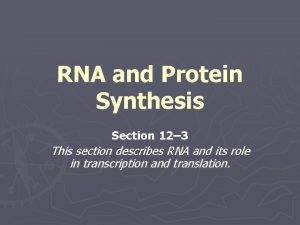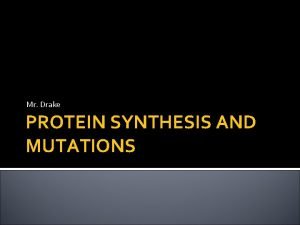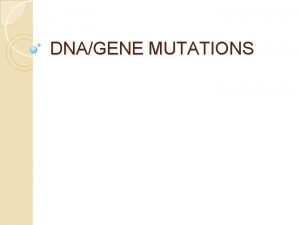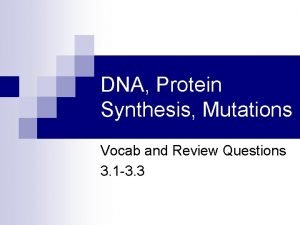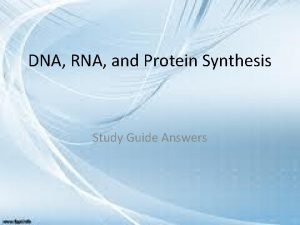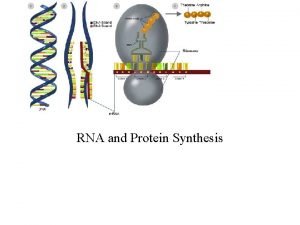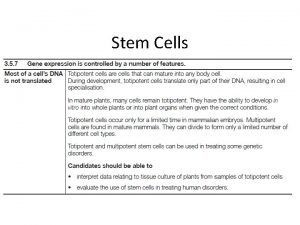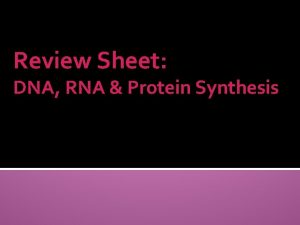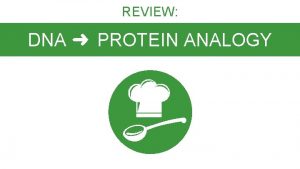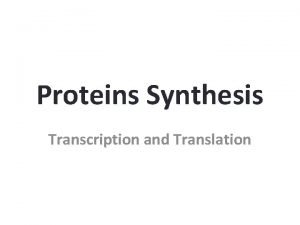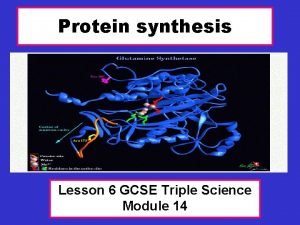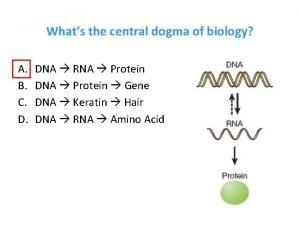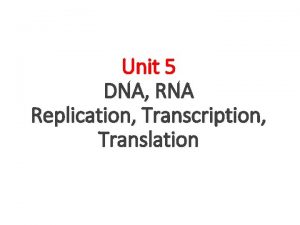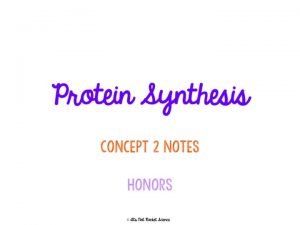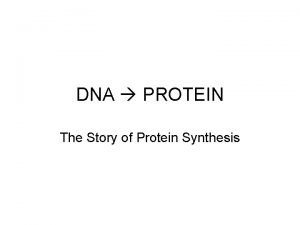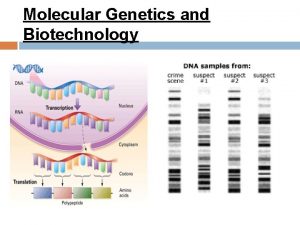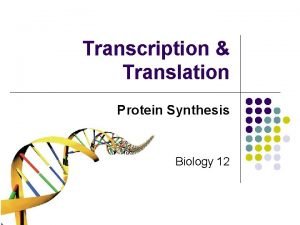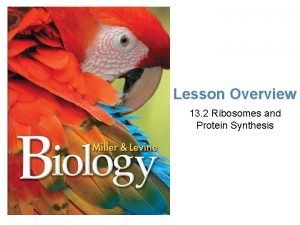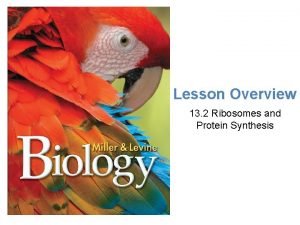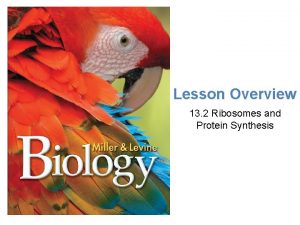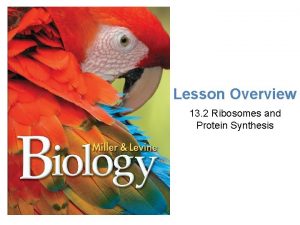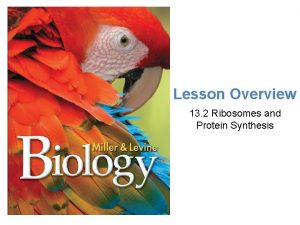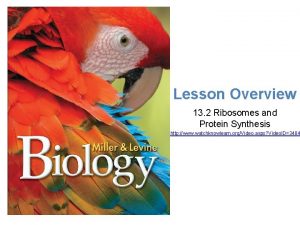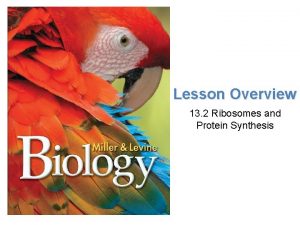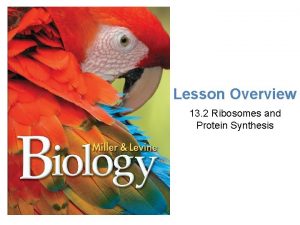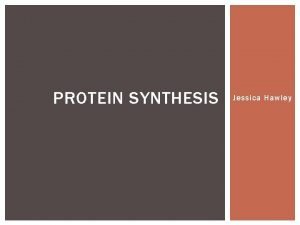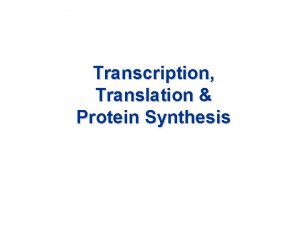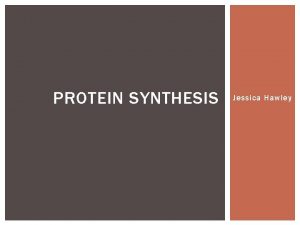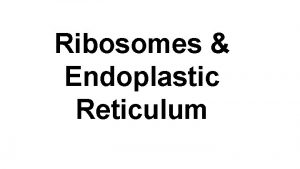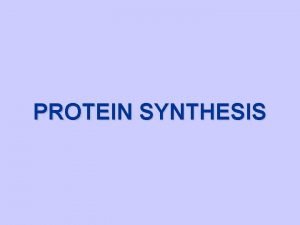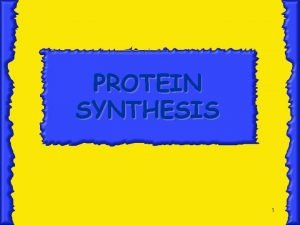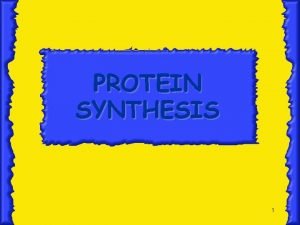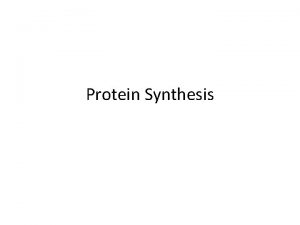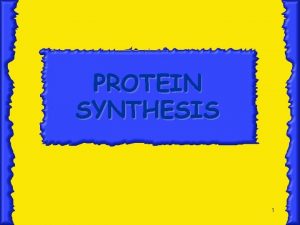Lesson Overview 13 2 Ribosomes and Protein Synthesis

Lesson Overview 13. 2 Ribosomes and Protein Synthesis

The Genetic Code What is the genetic code, and how is it read? The genetic code is read three “letters” at a time, so that each “word” is three bases long and corresponds to a single amino acid.

The Genetic Code The first step in decoding genetic messages is to transcribe a nucleotide base sequence from DNA to RNA. This transcribed information contains a code for making proteins.

The Genetic Code Proteins are made by joining amino acids together into long chains, called polypeptides. As many as 20 different amino acids are commonly found in polypeptides.

The Genetic Code The specific amino acids in a polypeptide, and the order in which they are joined, determine the properties of different proteins. The sequence of amino acids influences the shape of the protein, which in turn determines its function.

The Genetic Code RNA contains four different bases: adenine, cytosine, guanine, and uracil. These bases form a “language, ” or genetic code, with just four “letters”: A, C, G, and U.

The Genetic Code Each three-letter “word” in m. RNA is known as a codon. A codon consists of three consecutive bases that specify a single amino acid to be added to the polypeptide chain.

How to Read Codons Because there are four different bases in RNA, there are 64 possible threebase codons (4 × 4 = 64) in the genetic code. This circular table shows the amino acid to which each of the 64 codons corresponds. To read a codon, start at the middle of the circle and move outward.

Start and Stop Codons The genetic code has punctuation marks. The methionine codon AUG serves as the initiation, or “start, ” codon for protein synthesis. Following the start codon, m. RNA is read, three bases at a time, until it reaches one of three different “stop” codons, which end translation.

Translation What role does the ribosome play in assembling proteins? Ribosomes use the sequence of codons in m. RNA to assemble amino acids into polypeptide chains.

Translation The sequence of nucleotide bases in an m. RNA molecule is a set of instructions that gives the order in which amino acids should be joined to produce a polypeptide. The forming of a protein requires the folding of one or more polypeptide chains. Ribosomes use the sequence of codons in m. RNA to assemble amino acids into polypeptide chains. The decoding of an m. RNA message into a protein is a process known as translation.

Steps in Translation Messenger RNA is transcribed in the nucleus and then enters the cytoplasm for translation.

The Roles of t. RNA and r. RNA in Translation Ribosomes are composed of roughly 80 proteins and three or four different r. RNA molecules. These r. RNA molecules help hold ribosomal proteins in place and help locate the beginning of the m. RNA message. They may even carry out the chemical reaction that joins amino acids together.

The Molecular Basis of Heredity What is the “central dogma” of molecular biology? The central dogma of molecular biology is that information is transferred from DNA to RNA to protein.

The Molecular Basis of Heredity Most genes contain instructions for assembling proteins.

The Molecular Basis of Heredity Gene expression is the way in which DNA, RNA, and proteins are involved in putting genetic information into action in living cells. DNA carries information for specifying the traits of an organism. The cell uses the sequence of bases in DNA as a template for making m. RNA.

The Molecular Basis of Heredity The codons of m. RNA specify the sequence of amino acids in a protein. Proteins, in turn, play a key role in producing an organism’s traits.

The Molecular Basis of Heredity One of the most interesting discoveries of molecular biology is the near-universal nature of the genetic code. Although some organisms show slight variations in the amino acids assigned to particular codons, the code is always read three bases at a time and in the same direction. Despite their enormous diversity in form and function, living organisms display remarkable unity at life’s most basic level, the molecular biology of the gene.

You. Tube Video
- Slides: 19
